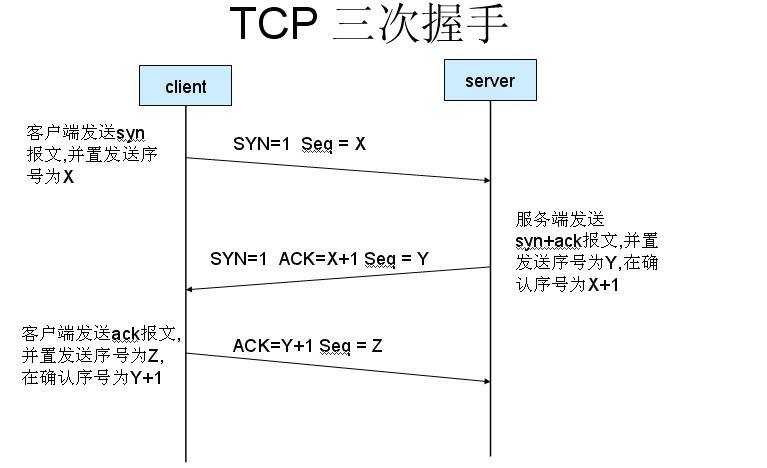
在TCP协议栈中,入口函数是init_inet_init()函数,如下所示,大概流程如下arp_init()- >ip_init()->tcp_v4_init()->tcp_init()->udp_init()->udplite4_register()->ping_init()。
static int __init inet_init(void) { struct inet_protosw *q; struct list_head *r; int rc = -EINVAL; BUILD_BUG_ON(sizeof(struct inet_skb_parm) > FIELD_SIZEOF(struct sk_buff, cb)); sysctl_local_reserved_ports = kzalloc(65536 / 8, GFP_KERNEL); if (!sysctl_local_reserved_ports) goto out; rc = proto_register(&tcp_prot, 1); if (rc) goto out_free_reserved_ports; rc = proto_register(&udp_prot, 1); if (rc) goto out_unregister_tcp_proto; rc = proto_register(&raw_prot, 1); if (rc) goto out_unregister_udp_proto; rc = proto_register(&ping_prot, 1); if (rc) goto out_unregister_raw_proto; /* * Tell SOCKET that we are alive... */ (void)sock_register(&inet_family_ops); #ifdef CONFIG_SYSCTL ip_static_sysctl_init(); #endif tcp_prot.sysctl_mem = init_net.ipv4.sysctl_tcp_mem; /* * Add all the base protocols. */ if (inet_add_protocol(&icmp_protocol, IPPROTO_ICMP) < 0) pr_crit("%s: Cannot add ICMP protocol\n", __func__); if (inet_add_protocol(&udp_protocol, IPPROTO_UDP) < 0) pr_crit("%s: Cannot add UDP protocol\n", __func__); if (inet_add_protocol(&tcp_protocol, IPPROTO_TCP) < 0) pr_crit("%s: Cannot add TCP protocol\n", __func__); #ifdef CONFIG_IP_MULTICAST if (inet_add_protocol(&igmp_protocol, IPPROTO_IGMP) < 0) pr_crit("%s: Cannot add IGMP protocol\n", __func__); #endif /* Register the socket-side information for inet_create. */ for (r = &inetsw[0]; r < &inetsw[SOCK_MAX]; ++r) INIT_LIST_HEAD(r); for (q = inetsw_array; q < &inetsw_array[INETSW_ARRAY_LEN]; ++q) inet_register_protosw(q); /* * Set the ARP module up */ arp_init(); /* * Set the IP module up */ ip_init(); tcp_v4_init(); /* Setup TCP slab cache for open requests. */ tcp_init(); /* Setup UDP memory threshold */ udp_init(); /* Add UDP-Lite (RFC 3828) */ udplite4_register(); ping_init(); /* * Set the ICMP layer up */ if (icmp_init() < 0) panic("Failed to create the ICMP control socket.\n"); /* * Initialise the multicast router */ #if defined(CONFIG_IP_MROUTE) if (ip_mr_init()) pr_crit("%s: Cannot init ipv4 mroute\n", __func__); #endif /* * Initialise per-cpu ipv4 mibs */ if (init_ipv4_mibs()) pr_crit("%s: Cannot init ipv4 mibs\n", __func__); ipv4_proc_init(); ipfrag_init(); dev_add_pack(&ip_packet_type); rc = 0; out: return rc; out_unregister_raw_proto: proto_unregister(&raw_prot); out_unregister_udp_proto: proto_unregister(&udp_prot); out_unregister_tcp_proto: proto_unregister(&tcp_prot); out_free_reserved_ports: kfree(sysctl_local_reserved_ports); goto out; } fs_initcall(inet_init);
在TCP协议栈中,接受数据是由tcp_v4_rcv函数实现的,TCP数据包被分装在sk_buff skb中。该函数从hash表中去寻找匹配的TCP端口号。匹配成功端口号后,随后便将数据交付给tcp_v4_do_rcv函数,在函数中检查socket的状态,若该socket的状态是TCP_ESTABLISHED,数据就被传送到tcp_v4_rcv_established函数中,随后被放到copy接收队列中。
int tcp_v4_rcv(struct sk_buff *skb) { ... TCP_SKB_CB(skb)->seq = ntohl(th->seq); TCP_SKB_CB(skb)->end_seq = (TCP_SKB_CB(skb)->seq + th->syn + th->fin + skb->len - th->doff * 4); TCP_SKB_CB(skb)->ack_seq = ntohl(th->ack_seq); TCP_SKB_CB(skb)->tcp_flags = tcp_flag_byte(th); TCP_SKB_CB(skb)->tcp_tw_isn = 0; TCP_SKB_CB(skb)->ip_dsfield = ipv4_get_dsfield(iph); TCP_SKB_CB(skb)->sacked = 0; process: if (sk->sk_state == TCP_TIME_WAIT) goto do_time_wait; if (sk->sk_state == TCP_NEW_SYN_RECV) { struct request_sock *req = inet_reqsk(sk); struct sock *nsk; sk = req->rsk_listener; if (unlikely(tcp_v4_inbound_md5_hash(sk, skb))) { sk_drops_add(sk, skb); reqsk_put(req); goto discard_it; } if (unlikely(sk->sk_state != TCP_LISTEN)) { inet_csk_reqsk_queue_drop_and_put(sk, req); goto lookup; } /* We own a reference on the listener, increase it again * as we might lose it too soon. */ sock_hold(sk); refcounted = true; nsk = tcp_check_req(sk, skb, req, false); if (!nsk) { reqsk_put(req); goto discard_and_relse; } if (nsk == sk) { reqsk_put(req); } else if (tcp_child_process(sk, nsk, skb)) { tcp_v4_send_reset(nsk, skb); goto discard_and_relse; } else { sock_put(sk); return 0; } } if (unlikely(iph->ttl < inet_sk(sk)->min_ttl)) { __NET_INC_STATS(net, LINUX_MIB_TCPMINTTLDROP); goto discard_and_relse; } if (!xfrm4_policy_check(sk, XFRM_POLICY_IN, skb)) goto discard_and_relse; if (tcp_v4_inbound_md5_hash(sk, skb)) goto discard_and_relse; nf_reset(skb); if (tcp_filter(sk, skb)) goto discard_and_relse; th = (const struct tcphdr *)skb->data; iph = ip_hdr(skb); skb->dev = NULL; if (sk->sk_state == TCP_LISTEN) { ret = tcp_v4_do_rcv(sk, skb); goto put_and_return; } sk_incoming_cpu_update(sk); bh_lock_sock_nested(sk); tcp_segs_in(tcp_sk(sk), skb); ret = 0; if (!sock_owned_by_user(sk)) { if (!tcp_prequeue(sk, skb)) ret = tcp_v4_do_rcv(sk, skb); } else if (tcp_add_backlog(sk, skb)) { goto discard_and_relse; } bh_unlock_sock(sk); put_and_return: if (refcounted) sock_put(sk); return ret; no_tcp_socket: if (!xfrm4_policy_check(NULL, XFRM_POLICY_IN, skb)) goto discard_it; if (tcp_checksum_complete(skb)) { csum_error: __TCP_INC_STATS(net, TCP_MIB_CSUMERRORS); bad_packet: __TCP_INC_STATS(net, TCP_MIB_INERRS); } else { tcp_v4_send_reset(NULL, skb); } discard_it: /* Discard frame. */ kfree_skb(skb); return 0; discard_and_relse: sk_drops_add(sk, skb); if (refcounted) sock_put(sk); goto discard_it; do_time_wait: if (!xfrm4_policy_check(NULL, XFRM_POLICY_IN, skb)) { inet_twsk_put(inet_twsk(sk)); goto discard_it; } if (tcp_checksum_complete(skb)) { inet_twsk_put(inet_twsk(sk)); goto csum_error; } switch (tcp_timewait_state_process(inet_twsk(sk), skb, th)) { case TCP_TW_SYN: { struct sock *sk2 = inet_lookup_listener(dev_net(skb->dev), &tcp_hashinfo, skb, __tcp_hdrlen(th), iph->saddr, th->source, iph->daddr, th->dest, inet_iif(skb)); if (sk2) { inet_twsk_deschedule_put(inet_twsk(sk)); sk = sk2; refcounted = false; goto process; } /* Fall through to ACK */ } case TCP_TW_ACK: tcp_v4_timewait_ack(sk, skb); break; case TCP_TW_RST: tcp_v4_send_reset(sk, skb); inet_twsk_deschedule_put(inet_twsk(sk)); goto discard_it; case TCP_TW_SUCCESS:; } goto discard_it; }
以客户端发送链接请求为例,即是文章开头的SYN=1,SEQ=x。该部分函数主要是查询路由表,并构造TCP数据报文,然后发送出去。在从路由表中找到目标IP地址后,就开始使用tcp_make_synack构造TCP请求链接数据报文,在构造链接请求报文时,要按照tcp。构造完成之后,就发送出去
static int tcp_v4_send_synack(struct sock *sk, struct open_request *req, struct dst_entry *dst) { int err = -1; struct sk_buff * skb; /* First, grab a route. */ if (!dst && (dst = tcp_v4_route_req(sk, req)) == NULL) goto out; skb = tcp_make_synack(sk, dst, req); if (skb) { struct tcphdr *th = skb->h.th; th->check = tcp_v4_check(th, skb->len, req->af.v4_req.loc_addr, req->af.v4_req.rmt_addr, csum_partial((char *)th, skb->len, skb->csum)); err = ip_build_and_send_pkt(skb, sk, req->af.v4_req.loc_addr, req->af.v4_req.rmt_addr, req->af.v4_req.opt); if (err == NET_XMIT_CN) err = 0; } out: dst_release(dst); return err; }
该函数主要根据状态,对sockt,数据包做出相应动作。
static int tcp_rcv_synsent_state_process(struct sock *sk, struct sk_buff *skb, struct tcphdr *th, unsigned len) { if (th->ack) { /* rfc3 * "If the state is SYN-SENT then * first check the ACK bit * If the ACK bit is set * If SEG.ACK =< ISS, or SEG.ACK > SND.NXT, send * a reset (unless the RST bit is set, if so drop * the segment and return)" * * We do not send data with SYN, so that RFC-correct * test reduces to */ if (TCP_SKB_CB(skb)->ack_seq != tp->snd_nxt) goto reset_and_undo; if (tp->rx_opt.saw_tstamp && tp->rx_opt.rcv_tsecr && !between(tp->rx_opt.rcv_tsecr, tp->retrans_stamp, tcp_time_stamp)) { NET_INC_STATS_BH(LINUX_MIB_PAWSACTIVEREJECTED); goto reset_and_undo; } /* Now ACK is acceptable. * * "If the RST bit is set * If the ACK was acceptable then signal the user "error * connection reset", drop the segment, enter CLOSED state, * delete TCB, and return." */ if (th->rst) { tcp_reset(sk); goto discard; } /* rfc * "fifth, if neither of the SYN or RST bits is set then * drop the segment and return." * * See note below! * --ANK() */ if (!th->syn) goto discard_and_undo; discard: __kfree_skb(skb); return ; } else {/*tcp_send_ack(); alloc_skb(); tcp_transmit_skb(); tcp_send_ack(sk); } return -1; } if (th->syn) { /* We see SYN without ACK. It is attempt of * simultaneous connect with crossed SYNs. * Particularly, it can be connect to self. */ tcp_set_state(sk, TCP_SYN_RECV);
原文:https://www.cnblogs.com/zwjsec/p/12103581.html